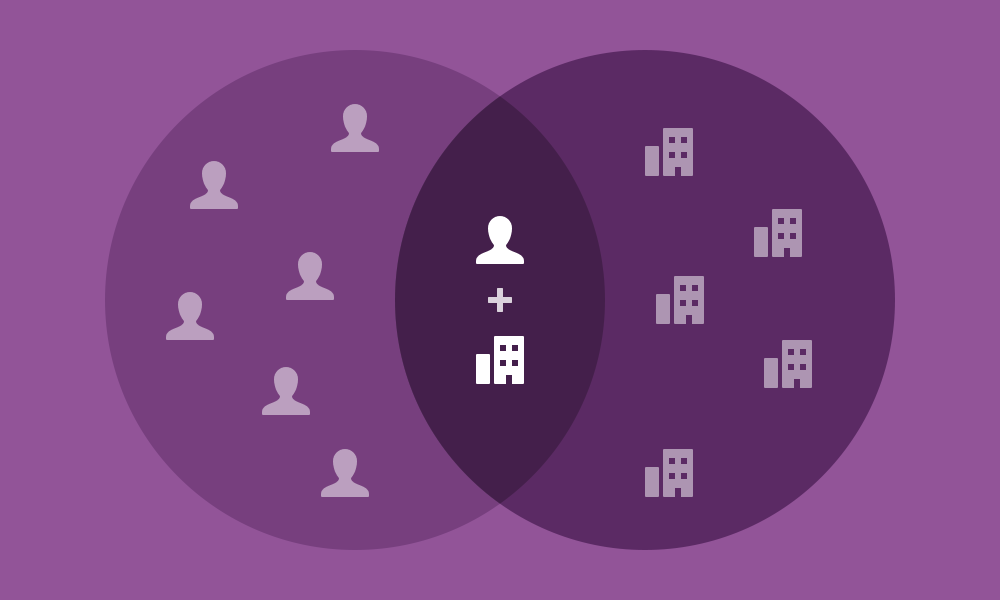
One of the greatest challenges when starting a new project is determining how best to align an organization's content with both user needs and business goals. We look to the Core Model approach to guide user behavior. This approach focuses on the actions and pages with the greatest potential impact on your organization’s objectives and your site's success.
So what does that mean?
Everyone probably approaches the Core Model workshop a little differently. As a user-centered design shop, we focus on user needs while still considering business goals. For the workshop, we gather your core team with ours and follow a step-by-step process:
- Identify a core task the the user needs to accomplish.
- See which business objectives align with the task.
- Identify the core content page.
- Think about the different avenues a user will take to get to that content.
- Recommend forward paths or actions from the core page.
- Identify all the different content elements on the page.
Let’s work through it in detail:
Before we can actually start the workshop, we need you to share with us what your organization is trying to achieve and who uses your product or service. If your organization has done any kind of strategic planning, you probably have a pretty clear idea of your goals as an organization. If you haven’t, I highly recommend you do this before starting a project. Your organization’s goals can help you identify some S.M.A.R.T. (Specific Measurable Achievable Relevant Time-bound) objectives for the digital platform as a whole. Write these down and set them aside for later use.
Okay, let’s start the workshop.
Step 1: Identify the Most Important User Tasks
We start here so that we focus first on the user. What tasks will your users need to complete on the site? Compile a list of the most important high-level tasks. Select one and write it down on your Core Model worksheet (don’t worry, you can always rinse and repeat with the others!). Every other aspect of the workshop should reflect back to this task and the audience group(s) that is completing the task.
Step 2: Identify Relevant Objectives
Go back to your SMART objectives and determine which one(s) relate to the user task you identified in step 1.
Step 3: Identify the Core Content Page
Keeping in mind that it doesn’t have to exist right now, what page would a user need in order to complete the task? During the workshop, not everyone will immediately think of the same page, which is actually great! One of the most welcome implications of the Core Model approach is that there are often multiple pages with high importance throughout the project. It dispels the idea of the homepage being the most, and in some cases the only, important page on the site. Instead, the Core Model focuses on the content a visitor is going to use to complete a task.
Step 4: Identify Inward Paths
How do you expect (or want) your users to get to the core content page? Often there’s a misconception that all traffic comes from the homepage. In reality, users get to your content through a variety of means. They come from other pages on your site or through external channels, such as search engine results, social media platforms or an email. With that in mind, any page on your site could be the entry point for that user. This exercise helps the stakeholder see their website as a web instead of a nested hierarchy in which the homepage is at the top and all traffic flows from that point downward.
Step 5: Identify Forward Paths
After a user gets to the core content page, what do you want them to do or where would you like them to go next? One way we like to think about this is from the perspective of improving your site’s bounce rate. Is there content on your site that your user would be interested in to help further their knowledge and/or your organizational goals? Going back to the idea that your site is a web of knowledge, users should be able to easily navigate to a sister page.
Step 6: Identify Core Content
Probably my favorite part of the workshop. This is when you pull together everything you’ve already done and think about the content on the page. From step 1, what information will help your user complete their task? From step 2, what information will make your site and organization successful? How can you further your mission and goals? From step 4, what are some trigger words to include on the page that will help with search engine optimization or navigation labels? From step, 5, what will push the user to take that next step, or forward path, on your site?
Awesome, you’ve just identified the core content and paths needed by looking at the intersection of a user task and your organization’s objectives. Feel free to rinse and repeat with other important user tasks.
I love running this workshop because it puts the focus on what's most important to your users while also furthering your organizational goals. In addition, you gain a better understanding of your content, providing a solid foundation for sketching, designing and structuring content for the entire project.